On arrival at the Windhoek Airport you will be met by a company representative who will present you with your accommodation vouchers and assist you with the collection of your rental vehicle. Continue towards the capital city, Windhoek.
Windhoek - An African capital with a difference; dubbed as the 'Cleanest City in Africa', Windhoek is the Capital City of the Republic of Namibia, a country described as one of Africa's most vibrant and successful sovereign states. Situated in the country’s central Khomas Region, Windhoek is nestled in a basin surrounded by scenic mountains in the central highlands of Namibia; Windhoek can be better described as a 'Working City'. It is a thriving active, administrative, commercial and industrial centre, serving as the melting pot and hub of most economic and technological developments and activities in the country .Whether enjoying the continental flair of Independence Avenue; browsing through the numerous shops; exploring the historical buildings or searching the markets for that special Namibian memento – we know that you will enjoy the harmonious blend of African and European cultures and traditions that make our capital city.
History:
Around 1840, Windhoek became the headquarters of the Nama-Oorlam Group under Jonker Afrikaner in central Namibia. The name Windhoek dates back to 1844, when it was used in a letter written by Jonker Afrikaner, it is thought that in a moment of nostalgia, he named the place Winterhoek after the farm in the Cape where he was born. German colonial administration was established in 1890 when Major Curt von Francois established a military post in Windhoek. During this administration the town was known as Windhuk, which later became Windhoek.
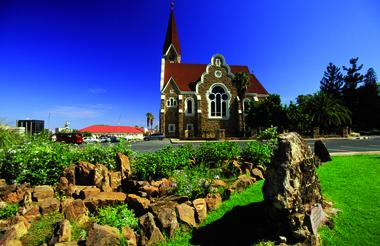
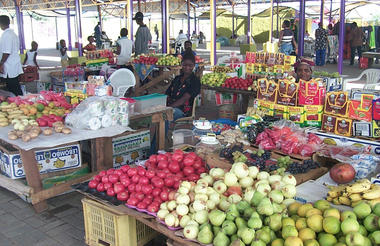
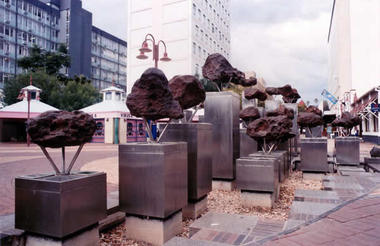
Depart from Windhoek in a southerly direction towards the western Kalahari Basin. On route pass through the small settlement of Rehoboth before arriving at the western boundary of the Kalahari Desert. Rehoboth is home to the “Baster Community” a fiercely independent people who are the descendants of a group of farmers of mixed European and Khoisan blood. These people first migrated to the area from the Cape in 1870 where they established a settlement at the site of an abandoned Rhenish Mission Station.
This region consists of ancient parallel red dunes covered by vegetation and ranging in height from 5 to 30 meters. Grassy plains scattered with mature Camelthorn trees, known as dune 'streets', separate the dunes that run northwest to Southeast. These plains support a diversity of vegetation and animal species that will leave you breathless with wonder, as you marvel at the paradise of the Kalahari Desert. This is where the red dunes meet the deep blue sky, and the sun sets in an explosion of colour, where some of the last few Bushmen roam in freedom and harmony with the land. The word ‘Kalahari’ means wilderness! Its relative inaccessibility, the harsh unyielding red sand dunes, the uncertain rainfall and lack of surface water, make it truly one of Africa’s last frontiers.
Enjoy the Kalahari Desert from one of twelve individual guest houses. The Kalahari Red Dunes Lodge is barrier-free for easier accessibility. All houses were designed without steps to climb. The main building is easily accessible via paved walking paths. Showers are flush to the floor, barrier-free, and very spacious. The following animals roam the private game reserve on almost 10,000 acres: Giraffe, eland, black wildebeest, blue wildebeest, Hartmann’s mountain zebra, plains zebra, nyala, impala, springbok, blesbok, red hartebeest, oryx, kudu, steenbok, porcupine, pangolin, aardvark, warthog, and ostrich. Many common small animals & waterfowl during rainy season.


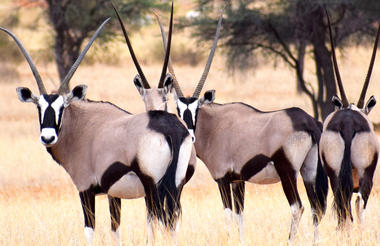
After breakfast depart and continue towards the central Hardap Region via the small towns of Mariental and Maltahöhe; your journey continues the gravel road descending the spectacular Tsarishoogte Pass into the Namib Desert, before reaching the Namib Naukluft Park. Aim to arrive at Le Mirage Resort & Spa during the late afternoon and watch the colours glow and change on distant mountains to the east. Le Mirage is situated at 21 km from the Sesriem gate to Sossusvlei.
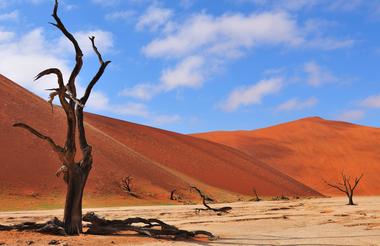
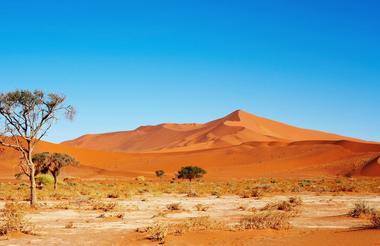

A pre-dawn start is essential this morning as you want to catch the soft light of the sunrise on the desert. After passing through Sesriem, the gateway to the dunes, you head into the heart of the dune field, reaching Sossusvlei to visit Dune 45 and the Deadvlei.
Landscape photo opportunities abound in the cool of the morning, with dawn's soft light first illuminating the dunes from crest down the back slope, then blazing orange everywhere, creating a powerful contrasting vista across the whole desert. Ancient mineral pans, stunted camel thorn trees and the chance of seeing a gemsbok or ostrich makes it essential to remember your camera! Spend the morning in and around Sossusvlei, also visiting dune 45. As the day wears on, return to Sesriem for lunch, escaping the heat of the afternoon. As the day cools off in the late afternoon, take a short excursion to the Sesriem Canyon.

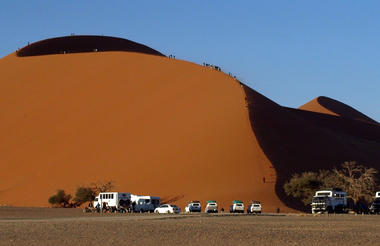
Before embarking on your trip to Swakopmund, why not enjoy a Balloon Safari with an 'Out of Africa' Champagne Breakfast?
Depart from Sossusvlei to Swakopmund in a northerly direction towards the settlement of Solitaire. This route runs parallel to the Namib Naukluft Park for most of the way except for a short corridor, which joins the plains of the Namib Desert to the Naukluft Mountain Range. This serves as a migratory corridor for the Oryx Antelope, which migrate between their summer and winter-feeding grounds.
From Solitaire continue travelling in a northerly direction adjacent to the Namib Naukluft Park. This route follows the gravel plains of the Namib Desert through the spectacular Gaub and Kuiseb Canyons before crossing the Namib Desert on route to the commercial harbour town of Walvis Bay. Make a quick stop over at Walvis Bay Lagoon which is home to hundreds of thousands of birds throughout the year, most notably flamingos. The drive from Walvis Bay to Swakopmund leads you between the dramatic coastal dues and the ocean.
Swakopmund is considered as Namibia’s premier coastal resort and is a popular destination with Namibian’s as a welcome respite from the heat of the interior. The town is also noted for its Old World charm and relaxed atmosphere. Founded in 1892 during the period of German colonial rule it served as the territory’s main harbour for years. Today this quaint town nestled between desert and ocean is enhanced by lush green lawns, palm trees and carefully tended gardens.
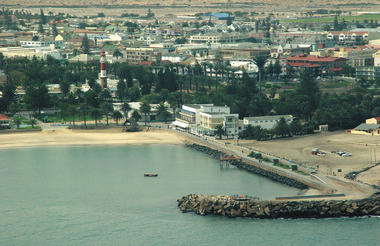
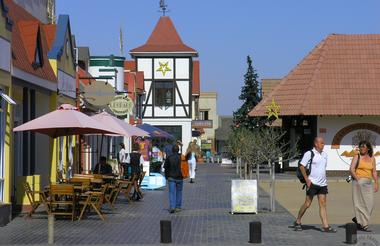

Choose from a large variety of optional activities to enjoy.
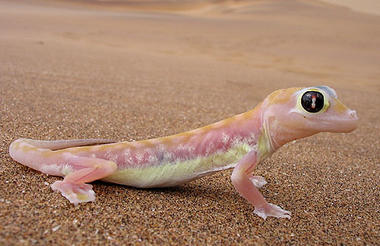
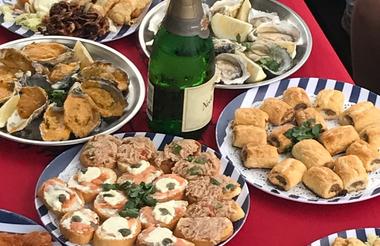

After breakfast depart from Swakopmund to Uis and Khorixas, arrive at Ugab Terrace Lodge in the late afternoon.
This mountainous area of Namibia is situated between the extreme desert aridity of the skeleton coast and the central plateau. Damaraland offers spectacular scenery and a variety of attractions ranging from fascinating geological formations to unique vegetation and the largest collection of ancient rock art in Southern Africa.
Damaraland has wide-ranging populations of desert-adapted elephant, black rhino, giraffe, ostrich and springbok. These animals have adapted their lifestyles to survive the harshness of the sun-blistered, almost waterless desert spaces. Elephant move through euphorbia bush country, and can travel up to 70km in a day in search of food and water
Damaraland was an area occupied primarily by the Damara people. The Damara name is derived from the Nama word "Dama", meaning "who walked here". This is because the Damara were known to the Nama people by the footprints they left around waterholes. From their vantage point in the mountains, the Damara were quick to spot resources such as water or animals, on the plains below, and they were therefore able to be the first groups to reach these essential resources.
Activities in Damaraland revolve around a trip to the fascinating Twyfelfontein San art engravings, Petrified Forest, Burned Mountain and the Organ Pipes. This is not to be missed. Namibia's first World Heritage Site, Twyfelfontein has the largest collection of petroglyphs (prehistoric rock art) in Africa.
The Organ Pipes are a distinctive series of dolerite pillars that have been exposed by erosion and can be viewed in the small gorge on the left hand side of the road leading to the Burnt Mountain. This flat-topped mountain derives its name from the piles of blackened limestone at its base. The trees of the Petrified Forest were uprooted some 200 million years ago and were swept along by rivers in flood, covered by sediments and then subsequently uncovered by erosion. Your local community guides will provide more of an insight into the area, whilst ensuring that pieces of petrified wood are not removed.
Visit the Damara Living Museum and learn about the fascinating traditional culture of the Damara people. This combination of Africa past and present makes for a truly unique and unforgettable experience.
Continue towards the Etosha National Park.
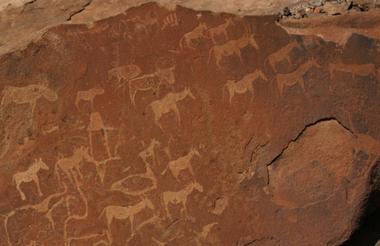


Continue towards the Etosha National Park.
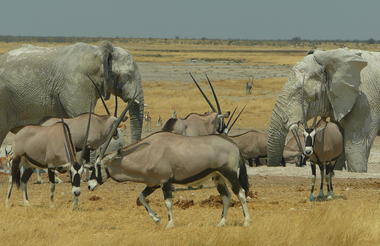
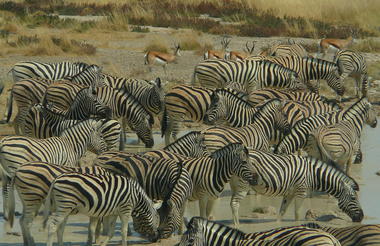
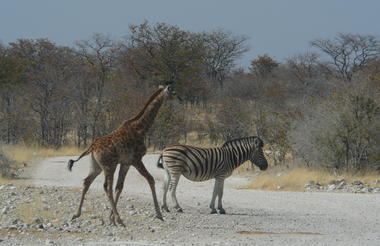
Enjoy a full day of game drive in the Etosha National Park.


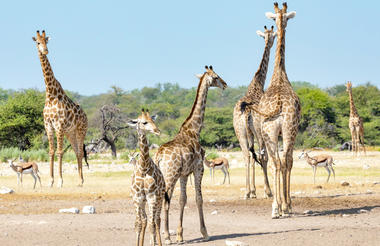
Today can be spent travelling from west to east through Etosha National Park whilst game viewing. Located only 8kms from the Von Lindequist Gate on the eastern outskirts of the Etosha National Park, Mushara Lodge is ideally situated for travellers visiting the park.
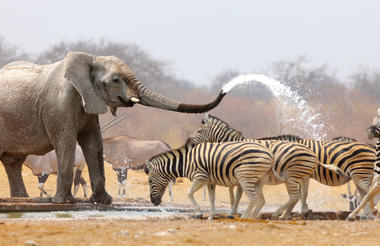
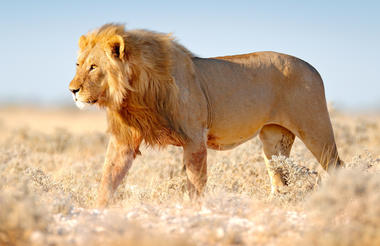
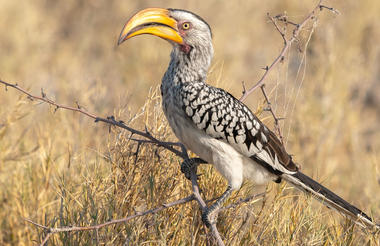
After breakfast depart to Windhoek via the small town of Okahandja. This is one of Namibia’s oldest established settlements and is the administrative centre of the Herero-speaking people. Numerous of the former Herero leaders are buried here and an annual procession through the town to the Herero graves commemorate those who died during the wars against the Nama’s and Germans. Optional excursions on route include a visit to the open - air wood carving centre and the Herero Graves.
Okahandja Craft Market - South:
This craft market is Okahandja’s best known tourist attraction. Woodcarvers from all over, and as far as the Kavango Region of north-eastern Namibia, who practice their ancient skills come here to sell their goods. Since wood is not resistant to the wear and tear of time, wood sculptures survive less well than other forms of art and are therefore an important hidden element in the art history of many cultures. The wood-and-thatch market is situated next to the main road at the town’s entrance and exit. Choose from a wide variety of hand-carved wooden artefacts such as animals, bowls or jewellery boxes.
Afternoon arrival back in the capital city, Windhoek where the late afternoon will be at leisure.
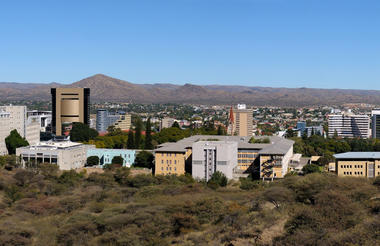
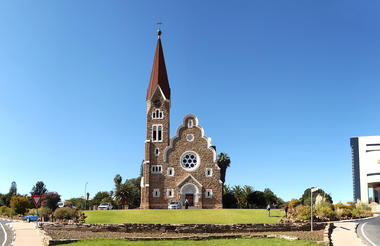
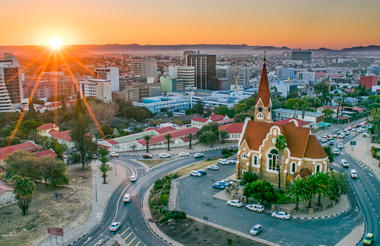
Depart to Hosea Kutako International Airport for your scheduled flight.


